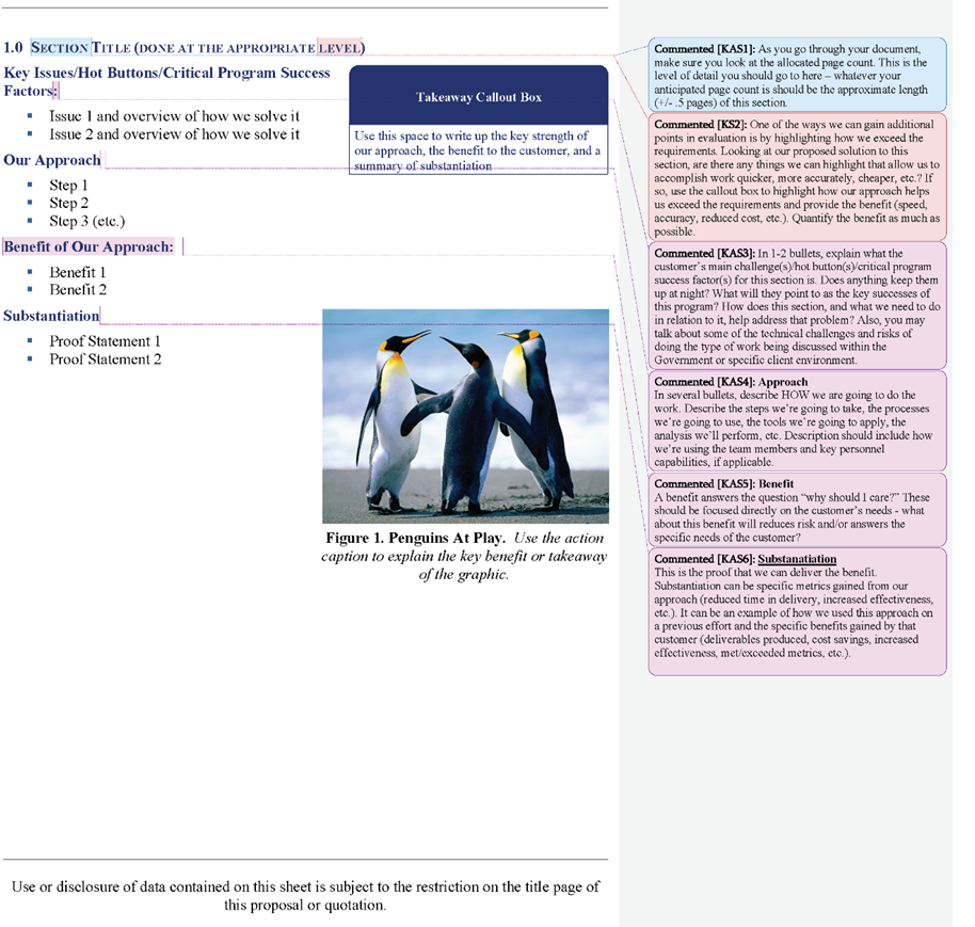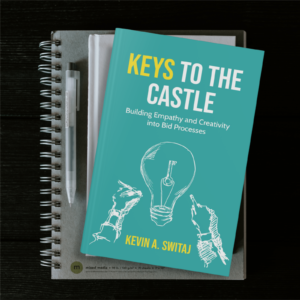Blog
Nov 14, 2022
Experienced, multi-functional proposal managers
Construct winning narrative
Make your bid look its best
Leverage our expertise to make your proposals stronge
Let BZ be your go-to proposal resource
Win a seat on critical contracts
Hight quality, rapid response assistance
Writing a proposal section can be a daunting task, especially for people who do not regularly do so. When we pull people who normally work on a contract or other areas of the organization, we are asking them to sacrifice their time and effort to do something they likely have not been trained to do and for which they probably lack significant experience. Given those hurdles, how can we make the process as seamless and painless as possible?
I like to use an annotated mockup approach to steer my content creators in the right direction and maximize their efficiency. An annotated mockup provides a template to guide proposal development and facilitate content creation by using an easy to follow, bulleted approach. The main benefit of the annotated mockup approach is it provides a way for your writers to get the key ideas and concepts on paper quickly and without much stress. By focusing on the ideas, and not the narrative, it frees the mind of our contributors to focus on what they want to say, not how they need to say it. It also provides an easy document for people to review at pink team. It allows the reviewers to best judge where the concepts and approach are and see if we are on the right track.
Below is an example of an annotated mockup template I often use. You’ll notice the Word comment bubbles along the right side. These contain guidance and key ideas for the writer to continue when developing each individual section in the proposal. This approach gives the writer the specific information we are looking for in each area and enables them to develop content quickly while minimizing the risk of the writer not providing the type of content we need.

The template has five main areas, built around my five key proposal section needs.
Introduction. The introduction should be about the client, what they need, and why they need it. It needs to reflect the key issues/hot buttons/pain points learned during capture and tie closely to our win themes.
Approach. Details HOW we will do the work. Your writers should look to add a step-by-step process here of how we will provide the support required to accomplish the needs of the client. Ask your writers to be specific – What tools do they use? Who defines this as a “best practice?” What methodologies work, and which do not, for this type of environment?
Benefits. In short, what does the client get from your approach? Why should the evaluator care about your approach? What will you deliver, especially to solve their problems as outlined in the introduction?
Substantiation. “Prove it!” Provide short summaries of where this has been done before and the results. Be specific – your team should be able to provide the writers with metrics on performance. While we may not have them at the end of the annotated mockup stage, knowing what we need here is critical.
Graphic. A first-generation graphic is all that is needed. A sketch, a previously used graphic with notations, something drawn in PowerPoint – anything that provides a sense of the direction the writer wants to go with the graphic.
Preparation for the review cycle is easy: I strip the writer guidance, lock the document for comments only, and circulate to the review team. You can either stitch them into one document or have the reviewers look at each file individually, like you would with a more traditional storyboard review. After the review, I have the writers remediate comments and develop the narrative structure around each bullet. They need to put meat on the bones and begin to create full sentences. However, if we need to, this is a great stage to hand off from a contributor to a professional proposal writer. Either way, the content and ideas developed during the annotated mockup stage provides a springboard for high-quality content.
Annotated mockups provide writers, both experienced and inexperienced, a tool to get the right ideas down on paper before worrying about how the content reads. This simple yet effective tool dramatically improves our team’s ability to create compelling proposals focused on the evaluator and answering their needs.
For more examples on how you can make your proposals resonate better with evaluators, check out my new book, Keys to the Castle, available through Amazon now!

